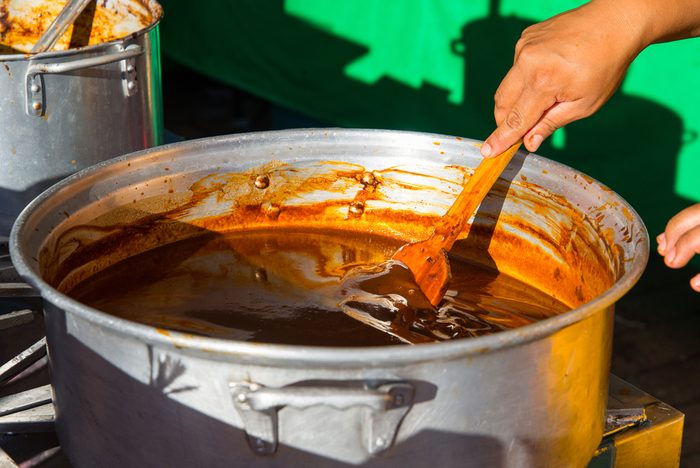Many traditional Mexican dishes have filtered up into the United States, and mole is one of them. It’s no surprise—mole is essentially Mexico’s national dish. Unlike these “Mexican” foods which really aren’t Mexican at all.
What is Mole Sauce?
While a Google search might turn up photos of small furry garden pests, traditional Mexican mole sauce is something completely different (thank goodness). First of all, it’s pronounced MOH-lay, and it’s generally used in the U.S. to describe a particular type of sauce, one spiced with earthy, rich flavors.
In the minds of many, chocolate is the ingredient that has come to define mole—but there are actually over 40 different forms of the sauce and some of them don’t even include chocolate!
What Does Mole Mean?
The reason for the variety of types of mole is that the word “mole” derives from the Aztecs’ molli (or mulli), which just means “sauce.” So if you hear anyone refer to “mole sauce” (as I did above) feel free to tell them they’re being redundant.
Mole is a true melding of New World and Old World flavors. Think: chocolate, fruit and a number of spices. Chocolate gets the attention, but its flavor should never dominate.
A properly done mole takes hours (sometimes even days) to prepare, with as many as 30 individual ingredients prepped in different ways. The ingredients are ground together into a powder or a paste that creates a seamless layering of complex flavors. In the final product, the sauce doesn’t taste like chocolate, or chili, or garlic, or cinnamon…it tastes like mole.
What is Mole Sauce Made Of?

Ingredients vary according to the individual sauce, of course. Moles in general mix ingredients from five different categories: chiles (at least two different types); sour (tomatoes or tomatillos); sweet (dried fruits or sugar); spices; and thickeners (bread, nuts or seeds). Once the paste is formed, it’s mixed with water or broth, and then simmered until it’s thick. Mole is a thick, dense sauce—it should never be runny.
Rich, savory-sweet Mole Negro starts with at least three types of dried chilies, contains smoky whole spices, and gets its dark brown, almost black color from a Mexican herb, hoja santa, and lots of dark unsweetened chocolate. Mole Poblano has a reddish-brown color and lists pasilla chiles, chocolate, pumpkin seeds, and coriander among its traditional ingredients. If you have the chance to try other types, you’ll run into all kinds of ingredients including ground peanuts (Mole de Cacahuate), bananas and plantains (Mole Dulce), ground squash seeds (Pipián); and fresh herbs and tomatillos (Mole Verde) for starters. There’s even a type of mole called, appropriately enough, Mole Manchamanteles (or “tablecloth-staining mole”) that uses apples and pineapples.
How to Make Mole
If you have the time, it’s worth the effort to make your own Mole Poblano. Once you’ve made the sauce, you can use it for practically anything…as the sauce for pulled pork or chicken, spooned over a simply browned piece of poultry or meat, or to top enchiladas.
Best Store-Bought Mole Sauce
Don’t have the time? Thanks to online shopping, there are shortcuts; you can order a few different varieties of authentic mole paste from Mexico to get you started.
To use a premade paste (you can find this at many Mexican markets), mix one part paste with three parts water or broth, bring it to a boil while stirring (or whisking), then let it simmer for 20 minutes, stirring frequently. Add more liquid if necessary, but remember, your finished sauce should be thick.
You can also buy premade mole sauce, too.
Try These Dishes With Mole
And of course, there are plenty of delicious recipes you can make at home that incorporate the spices, fruits, herbs and flavors (and chocolate!) of mole. Enjoy!
The post What is Mole Sauce, Anyway? appeared first on Taste of Home.
source https://www.tasteofhome.com/article/what-is-mole-sauce/









0 Response to "What is Mole Sauce, Anyway?"
Post a Comment